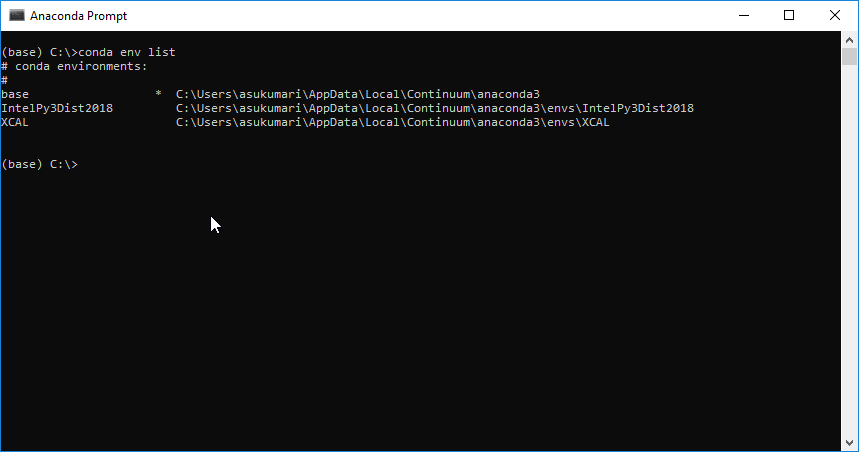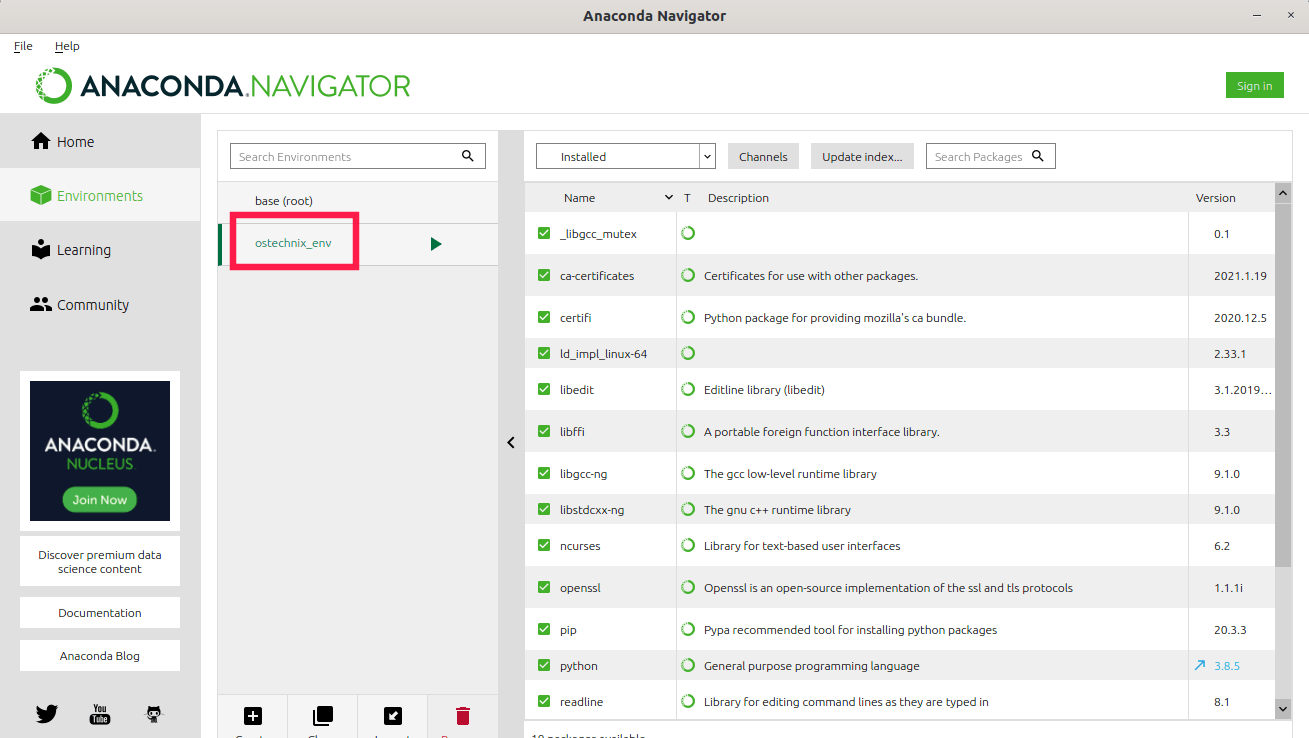

It isolates different python and package versions so they do not interact with each other. (It actually does far more, but we’ll stop here 🤓)Ĭonda can do that because is a package manager, but also an environment manager.
List conda environments install#
Everybody is mix and matching words pip, conda and install until it starts working! And it usually works, until it breaks your environment completely.Īnd you do not know why it broke so you remove and install all packages from scratch. I thought we’re using just python?!”.Īnd I did not know what to answer. “Is conda just python with preinstalled packages?”. People often ask me “Should I use conda or pip to install packages?”. # Then run any relevant commands or programs Last updated: Augat 1:01 p.m.One of the first things I’ve noticed while coming into Machine Learning Engineer role was package management mess. # Initialize conda with either of the following options: This is because non-interactive shells don't read your. To use a conda environment non-interactively in a script, you need to initialize the shell it creates for conda. To create an environment with multiple packages: conda create -n myenv scipy=0.15.0 astroid numpyħ. To create an environment with a specific version of a package: conda create -n myenv scipy=0.15.0 To create an environment with a specific package: conda create -n myenv scipy To create an environment with a specific Python module, load that module first with the following command and then create the environment: ml python/3.7 Check to see which are available using: ml spider Python The Grid has multiple versions of the Python module. You can create an environment with a specific version of Python, a specific package, or even a specific version of a package. You'll see that pip is installed along with the other packages it required.Ħ.

Check to see if the package is installed. Pip will be installed with all its dependencies. Type: conda install pipĮnter y to proceed. From here, you can install packages using conda install. This example environment will be empty.ħ. To see a list of all packages installed in your environment use conda list. The active environment has an asterisk after the name. To see a list of all your environments, use conda info -env. Type: conda activate myenv To exit an environment, you'd enter conda deactivate. There will be no programs installed in this environment. This creates the myenv environment in /envs/. In this example, we're creating an environment named myenv. Start an interactive job again: srun -q primary -N 1 -n 8 -mem 4G -t 10:00:00 -pty bashĥ. You'll notice the '(base)' indicating you are in your default 'base' environment. Restart your shell for the changes to take effect: exit the interactive job and log out. If this is your first time using Conda, you need to initialize your shell with it.Ĥ. No processes, compiling, or jobs should run on the head node Warrior. Keep this environment empty of any programs and create separate environments to keep your programs isolated from each other.Ģ. When you begin using Conda, you will have a default environment named base. Conda gives you the ability to create environments with packages and their dependencies that will be separate from other environments.
List conda environments how to#
This tutorial goes over how to create a Conda environment. HPC Grid Tutorial: How to create a Conda environment Share & Print


 0 kommentar(er)
0 kommentar(er)
